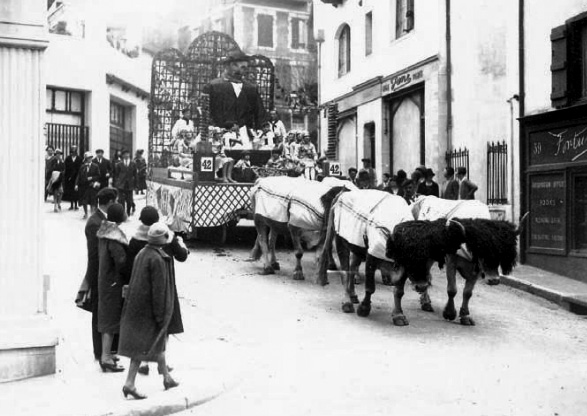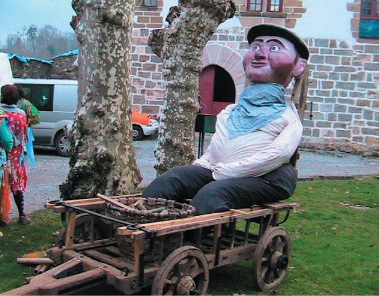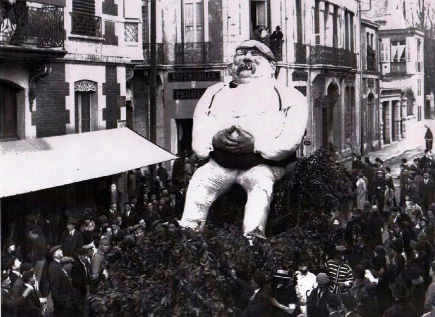
- Mikel Aranburu Urtasun has highlighted the similarities between the Zanpantzar characters that are burned in many localities of Iparralde in the carnivals and the Olentzero that appears in Christmas. Revista Soinuberri 14 (pp. 409-435) He has received several stories about Olentzero, suggesting that they are not the same characters as Olentzero and Zanpantzar.

To begin with, he stressed that Olentzero's party is not that of children, but that of young people, a party to organize and enjoy with some autonomy. In the end it says the same thing in Zanpantzar.

Olentzero trunk and man
Aranburu points out that around the winter solstice there are many universal characteristics, such as excess food or rites around the house fire. The most widespread and lasting to the present day is that of the Christmas trunk: suckler, the trunk, the noose, the toza, the trunk, the choca, the rabasa... The most commonly used denominations in Euskera have been subilero, suckler, baztarre, Olentzero trunk or a peak of Onantzaro. The connection of the trunk to the Olentzero is remarkable.
On the other hand, the old testimonies of the anthropomorphic or humanoid Olentzero appear in the northwest of Navarra: Lesaka, Goizueta, Larraun, Arakil... and in Gipuzkoa between Zarautz and Irun.
And Zanpantzar?
Aranburu reviews Olentzero's descriptions by Pío Baroja. He points out that Olentzero's primitive identity predates Christianity and draws the attention of Baroja to France as the country of origin of the Olentzero. Baroja talks about Ipar Euskal Herria and talks about the straw giant; The Golden Bough: In A Study in Magic and Religion (1890) Frazer picked it up in solstice and in spring with a doll that burns across Europe. The Christmas and Carnival festivities would therefore be linked to the winter solstice, raising the tension between winter and spring. At this time, the collections of fragments of young people stand out, among them Olentzero's.

Folkloric researcher Thierry Truffaut published in 2011 a study on the traditions of the carnivals of Lapurdi. He collected testimonies from over 40 localities, parties, music, and the data of his costumes, accompanied by photographs and videos. Since the 16th century, it has been documented that Saint-Pansard or Zanpantzar (Santo Triptico) is walking, judging and condemning fire as a symbol of the end of the era of prosperity and the beginning of abstinence, that is, Lent begins.
The responsibility of organizing the party was held by the single boys, Truffaut sees it as a rite of passage. Through the reading of his work, Aranburu easily sees the similarity of Olentzero and Zanpantzar in both form and identity.
Article: Olentzero, synthesis and suggestion (Mikel Aranburu Urtasun, Soinuberri 14, 409-435 pp.)
Summary: Olentzero is Saint-Pansard /Zanpantzar? (Mikel Aranburu Urtasun, Euskonews nº 756, 2020-12-17 / 2021-01-20)